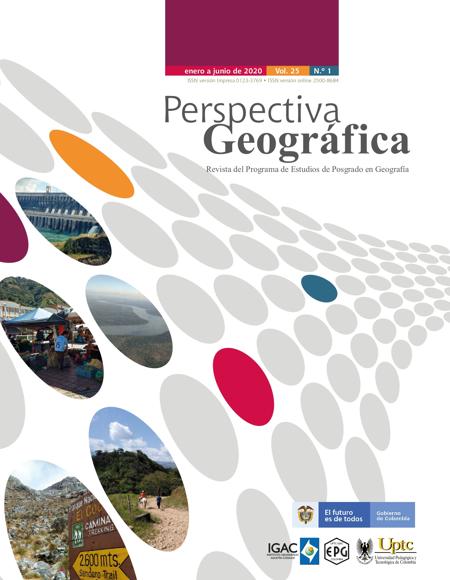“Somos Amazonía,” a New Inter-indigenous Identity in the Ecuadorian Amazonia: Beyond a Tacit jus aplidia of Ecological Origin?

Abstract
The double colonization of the Northern Ecuadorian Amazon, coming from the Southern Amazon but mainly from the Coast and Sierra, has multiplied perceptions, rights, and management methods in this territory. This article explores these differences and reconstructs the history of this colonization and the rights of access to land, which are private for the colonos (settlers) and mostly communal for the indígenas (indigenous people). These legally differentiated groups are similar in their perception of the territory and their socioeconomic and environmental limitations: most agricultural products are not profitable. Between the
growing metropolises and the remaining forest, the countryside is slowly shrinking. Communities are appearing that combine indigenous people and settlers and that copy the indigenous communities’ rights and practices. However, this communal right is acquired for the Amazonian groups but not for others, indígenas or colonos, defining de facto a jus aplidia, along with jus soli and jus sanguinis.
Keywords
Ecuadorian Amazon;, “Biome right”, Land tenure, Indígenas and colonos, Perception
Author Biography
Mehdi Saqalli
Researcher, Ph.D. in Rural Development, Université catholique de Louvain. Centre national de la
recherche scientifique (CNRS), Laboratoire Géographie de l’Environnement (GEODE), CNRS, and
Université de Toulouse. ouse.
Eva Béguet
Master’s student in Anthropology, Université Paris 10 Ouest Nanterre, France.
Nicolas Maestripieri
Researcher, Ph.D. in Geography, Université Toulouse 2 Jean Jaurès. TerraNIS, France.
Eric de Garine
Doctoral professor, Ph.D. in Anthropology, Université Paris 10 Ouest Nanterre, France.
References
Acosta Espinosa, A. (2013). El Buen Vivir. Sumak Kawsay, una oportunidad para imaginar otros mundos. Barcelona, Spain: Icaria Editorial.
Artaraz, K. &, Calestani, M. (2014). Suma qamana in Bolivia: Indigenous Understandings of Well-being and Their Contribution to a Post-Neoliberal Paradigm. Latin American Perspectives, 42(5), 1–18.
Bennett, D. E. & Sierra, R. (2014). Multi-Scale Dimensions of Indigenous Land Tenure in the Amazon. Human Ecology, 42(4), 551–563.
Borgatti, S. (1999). Elicitation techniques for cultural domain analysis. In J. Schensul, M. Le Compte, B. Natasi, & S. Borgatti (Eds.), Enhanced ethnographic methods: Audiovisual techniques, focused group interviews, and elicitation techniques (pp. 115–151). Walnut Creek, USA: Altamira Press.
Bosa, B. & Wittersheim, E. (2009). Luttes autochtones, trajectoires postcoloniales: Amériques, Pacifique. Paris, France : Karthala Editions, Les terrains du siècle.
Castree, N. (2004). Differential geographies: place, indigenous rights and ‘local’ resources. Political Geography, 23(2), 133–167.
Cerretti, J. (2006). Sources of negotiation power in environmental conflicts: the case of oil extraction in the Ecuadorian Amazon [Doctoral dissertation, University of Vermont, USA].
Chiriboga, M. (1988). La reforma agraria ecuatoriana y los cambios en la distribución de la propiedad rural agrícola 1974-1984. In P. Gondard (Ed.), Transformaciones agrarias en Ecuador, Geografía Básica del Ecuador, Tomo V. Quito, Ecuador: IPGHORSTOM.
Coombes, B., Johnson, J. T. & Howitt, R. (2012). Indigenous geographies I: Mere resource conflicts? The complexities in Indigenous land and environmental claims. Progress in Human Geography, 36(6), 810–821.
Descola, P. (1986). La nature domestique. Symbolisme et praxis dans l’écologie des Achuar. Paris, France: Maison des sciences de l’Homme.
DeWalt, K. M. & DeWalt, B. R. (2011). Participant observation: a guide for fieldworkers. Plymouth, UK, AltaMira Press.
Eberhart, N. (1996). Diagnostic agraire du front de colonisation en Amazonie équatorienne [Master’s thesis, SupAgro Montpellier].
Ecuadorian National Institute of Statistics (INEC) (2018). Ecuador en cifras. www.ecuadorencifras.gob.ec/resultados/
Fontaine, G. (2010). Gaz et pétrole en Amazonie. Conflits en territoires autochtones. Paris, France: L’Harmattan.
Gondard, P. & Mazurek, H. (2001). 30 años de reforma agraria y colonización en el Ecuador (1964-1994): dinámicas espaciales. Quito, Ecuador: IRD.
González, M. (2010). Autonomías territoriales indígenas y regímenes autonómicos (desde el Estado) en América Latina. In M. González, A. Burguete Cal y Mayor, & T. P. Ortiz (Eds.). La Autonomía a Debate. Autogobierno Indígena Y Estado Plurinacional En América Latina (pp. 35–62), Quito, Ecuador: FLACSO/GTZ/CIESAS/ UNICH.
Harner, M. (1977). Les Jivaros: hommes des cascades sacrées. Paris, France: Payot.
Hoinathy, R. (2013). Pétrole et changement social au Tchad : rente pétrolière et monétisation des relations économiques et sociales en zone pétrolière de Doba. Paris, France: Karthala.
Juteau-Martineau, G., Becerra, S. & Maurice, L. (2014). Ambiente, petróleo y vulnerabilidad política en el Oriente Ecuatoriano: ¿Hacia nuevas formas de gobernanza energética? América Latina Hoy, (67), 119-137.
Kimerling, J. (1990). Disregarding environmental law: petroleum development in protected natural areas and indigenous homelands in the Ecuadorian Amazon. Hastings Int’l & Comp. L. Rev., 14, 849–856.
Kimerling, J. (1993). Crudo Amazónico. Quito, Equateur: Abya Yala.
Larrea C., & Warnars L. (2009). Ecuador’s Yasuní-ITT Initiative: Avoiding emissions by keeping petroleum underground. Energy for Sustainable Development, 13(3), 219–223.
Maestripieri, N. & Saqalli, M. (2016). Assessing Health Risk Using Regional Mappings Based on Local Perceptions: A Comparative Study of Three Different Hazards. Human and Ecological Risk Assessment Journal, 22(3), 721–735.
MAE-PRAS: Ministerio de Medio Ambiente de Ecuador (2016). Programa de Reparación Ambiental y Social. https://www.ambiente.gob.ec/wp-content/uploads/downloads/2017/03/INCORPORACION-DE-LOS-APORTESCIUDADANOS-PRAS-2016.pdf.
Mazoyer, M. & Roudart, L. (1997). Histoire des Agricultures du monde, du néolithique à la crise contemporaine. Paris, France: Seuil.
Morin, L. (2015). Diagnostic agraire d’un front pionnier en Amazonie équatorienne, Paroisse de Dayuma, province de Orellana, Equateur [Master’s thesis, SupAgro Montpellier].
Ospina Peralta, P., Santillana Ortiz, A. & Arboleda, M. (2008). Neo-Corporatism and Territorial Economic Development: The Ecuadorian Indigenous Movement in Local Government. World Development, 36(12), 2921–2936.
Radcliffe, S.A. (2012). Development for a post-neoliberal era? Sumak kawsay, living well and the limits to decolonisation in Ecuador. Geoforum, 43, 240–249. https://doi.org/10.1016/j.geoforum.2011.09.003
San Sebastian, M. &, Hurtig, A. (2005). Oil development and health in the Amazon basin of Ecuador: popular epidemiology process. Social Science & Medicine, 60(4), 799–807.
Sanchez-Lopez, D. (2015). Reshaping notions of citizenship: the TIPNIS indigenous movement in Bolivia. Development Studies Research, 2(1), 20–32.